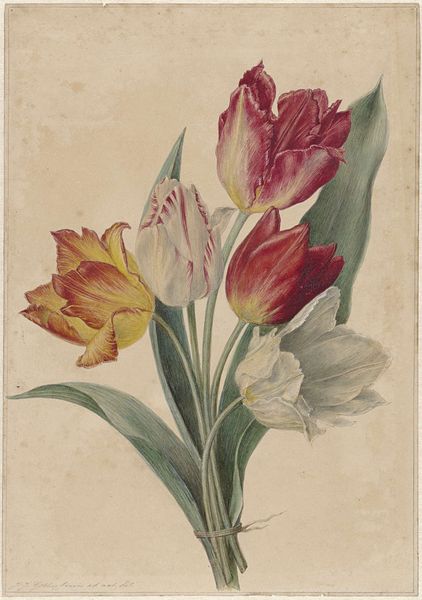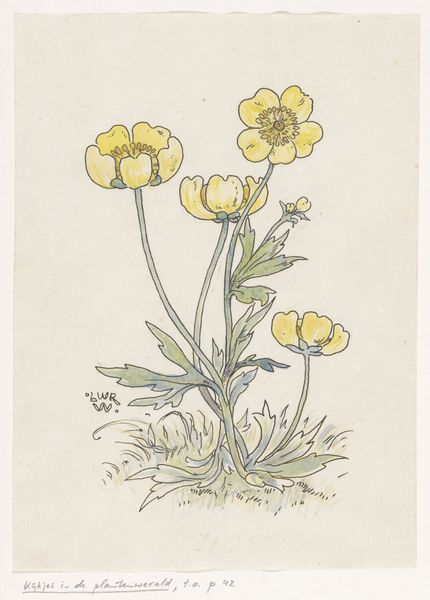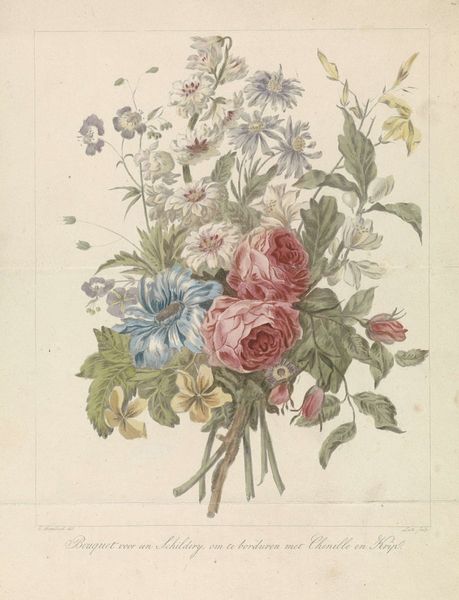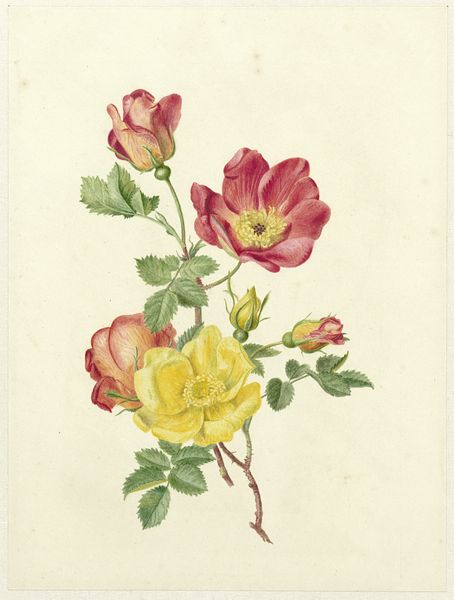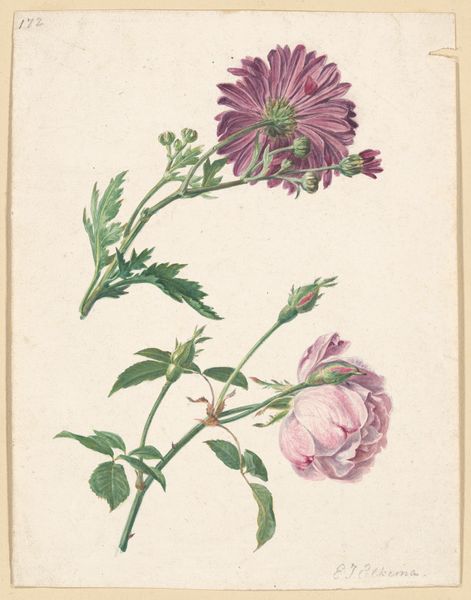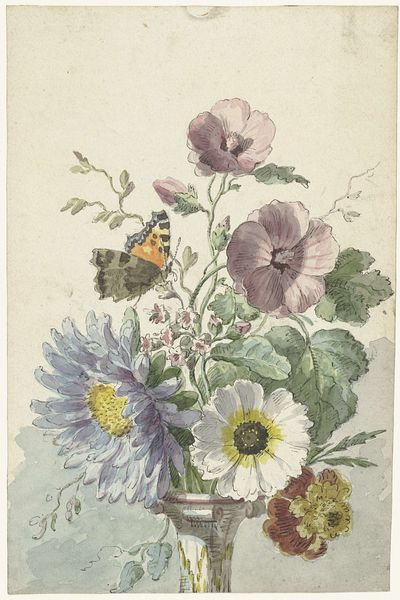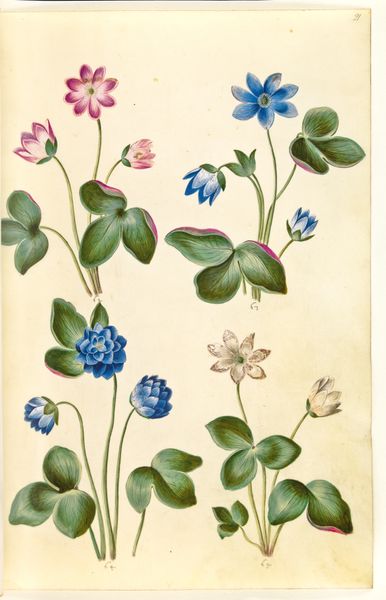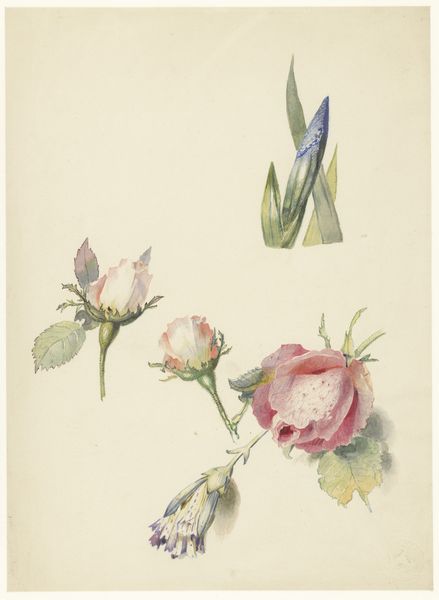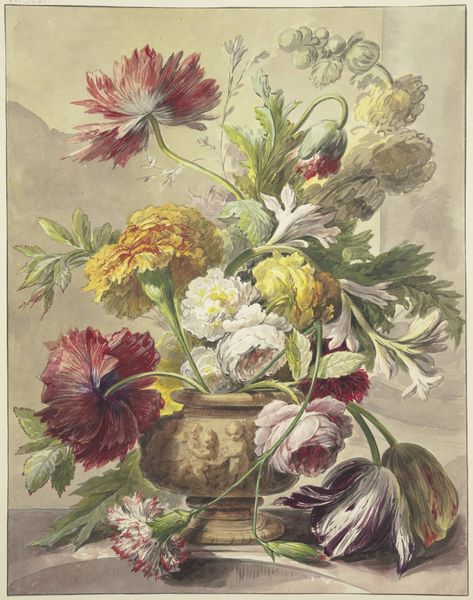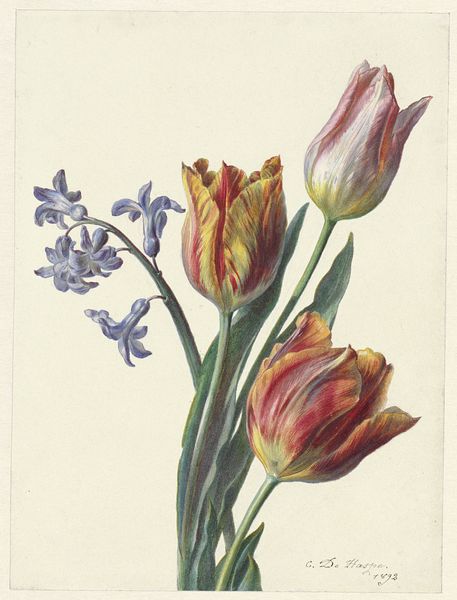
#
vegetal
#
natural world styling
#
egg art
#
food illustration
#
floral photography
#
botanical photography
#
food art
#
watercolour illustration
#
botanical art
#
flower photography
Dimensions: height 210 mm, width 144 mm
Copyright: Rijks Museum: Open Domain
Editor: Here we have "Boeket van tulpen, viooltjes, blauwe druifjes en dotters," which roughly translates to "Bouquet of tulips, violets, grape hyacinths, and globeflowers," created sometime between 1763 and 1825 by Willem van Leen. It feels like a pretty, straightforward botanical study. What can you tell us about this piece? Curator: What strikes me is the watercolour medium itself. In the late 18th and early 19th centuries, watercolour wasn't merely a preparatory tool but a respected medium, closely linked to scientific illustration and burgeoning botanical interests fueled by colonialism. The very pigments used – where were they sourced? Who ground them? Who supplied the paper? Editor: I hadn't considered the materials themselves as part of the story. The tulips and violets feel almost generic to a modern eye. Curator: But were they generic then? Consider the tulip mania of the previous century. The flowers, here, aren't simply decorative; they're commodities, reflecting the complex economic and social structures of the time. Their cultivation, trade, and even their depiction in art are tied to labour practices and the circulation of goods across vast distances. This image might be celebrating Dutch mastery over nature, cultivation techniques, and perhaps even subtly, the dominance of its mercantile systems. Editor: So, beyond the aesthetic appeal, it's also a snapshot of economic power dynamics and the global trade of resources during that era? Curator: Precisely. By focusing on the materials and their origins, we can unpack the seemingly simple image and see a more complex web of connections. Editor: I’ll definitely look at still lifes differently from now on. Thinking about where these flowers were cultivated and how their pigments are manufactured and who paid for the supplies offers a whole new perspective. Curator: Indeed, it pushes us to think about not only who is represented, but who does the representing and the means and relationships of production at play.
Comments
No comments
Be the first to comment and join the conversation on the ultimate creative platform.

